For most of us, for most of our lives, electricity bills and our consumption have both been something of a black box. We know that we get a bill every 1-3 months and get charged for the electricity that we use, but we don’t generally have access to data that would provide us with the insights we need to take meaningful action in between bills.
This article takes a look at the ‘energy awareness factor’ in energy bill savings. The working hypothesis here is that if households know what they’re using on a daily or moment-by-moment basis then they’re more likely to take action to correct their behaviour than if they had no such insights. This is especially true for homes with solar & batteries.
Knowledge is power – if you use it
Most Australian homeowners understand that solar can save them money and are increasingly beginning to look at battery storage in the same way (even if batteries aren’t quite as attractive as an investment – yet).
Anyone could install one or both of these technologies and reduce their energy bills without any additional effort, continuing to consume energy as they always have. But taking this passive approach seems like a wasted opportunity – if you’re generating and storing your energy locally, you’re likely to want to make the most of it.
Modern communications technology – virtually anything connected to the internet – gives all of us insights into a range of aspects of our daily lives. (Think: Banking, mobile phone & internet plans and health & fitness, among other things.) Although it’s taken some time, this connectivity is now making its way into the energy-related aspects of our lives.

Behaviour change: The next step
Having solar & batteries allows you to meet all or a portion of your energy needs locally, thus reducing the amount of energy you need to draw (and purchase) from the grid. Additionally, solar feed-in tariffs offer an secondary benefit solar homes in the form of bill credits – which can even help them eat into the daily supply charges which would be untouchable otherwise. With a large enough system and low enough electricity consumption, you might even be able to get your bill down to almost nothing.
But you’re unlikely to achieve this highly coveted ideal just by sitting there. Just like any electricity bill, the savings provided by a solar & battery system isn’t fixed – it’s related to your behaviour and the devices you use. Solar and batteries open a whole slew of opportunities, but it’s up to you to take action – which often simply means making a few small modifications to the way you do things.
What are your options?
Firstly, it’s useful to consider what behaviour-related levers you have at your disposal to reduce your electricity bills. You can basically divide these into three categories (putting aside for the moment the topic of solar & batteries). The first one is the most relevant to this article, but the other two are also key in any ‘big picture’ approach to bill savings.
- Usage behaviour: Running (or not running) devices at strategic times. Similarly, just seeing a spike appear in a graph when you switch on your AC or when your pool pump comes on might be all you need to think twice about whether that device needs to be on at this very moment – or whether it can wait until later. The changes you decide to make may just be minor ones that deliver a large impact – but if you’re determined to get your home running as efficiently as possible (and the other occupants on board with your plan), there’s no end of actions you can take.
- Purchasing behaviour: Replacement of household devices with more efficient ones. If you’ve got some older, power-hungry devices in your home that need replacing anyhow, it might be worth replacing them. You may not even realise how much energy something is using until you see it in black and white (or more likely, on a screen).
- Choice of retailer: Selecting a retail electricity company that charges fair rates & offers a decent feed-in tariff (if you’ve got solar). Too many people are unaware of how much they could be saving simply by switching retailers (on sites like EnergyMadeEasy or WATTever). Knowing how much you spend for each unit of electricity – and at what time of day if you’re on time of use billing – is essential for anyone interested in reducing their bills.
Who’s doing it already – and does it work?
There seems to be strong evidence that having a bit of awareness (usually thanks to some kind of energy monitoring or management system) and a bit of motivation can definitely make a difference.
For this article I reached out a bunch of people through various avenues to solicit tales of their experiences in bringing down energy bills through awareness and behaviour change. With nearly 2 million solar systems on the roofs of homes around the country, I figured there would be no lack of stories and people willing to talk about them.
In particular, I got in touch with:
- Nick Pfitzner, the first person in Australia to have a Tesla Powerwall installed at his home and founder of the blog UnleashThePowerwall.com
- Members of the Facebook group ‘My Efficient Electric Home‘, which is a very active forum for all things related to home energy (I encourage everyone to join)
- Nigel Morris, business development director at Australian energy monitoring (& management) system developer Solar Analytics (and a solar industry veteran)
- Shavaj Kallamkote, founder & chief technology officer of carbonTRACK, an Aussie energy management system developer (Full disclosure: I have done some copywriting work for carbonTRACK)
What they said
Nick Pfitzner, NSW – 5kW solar system & Tesla Powerwall 1
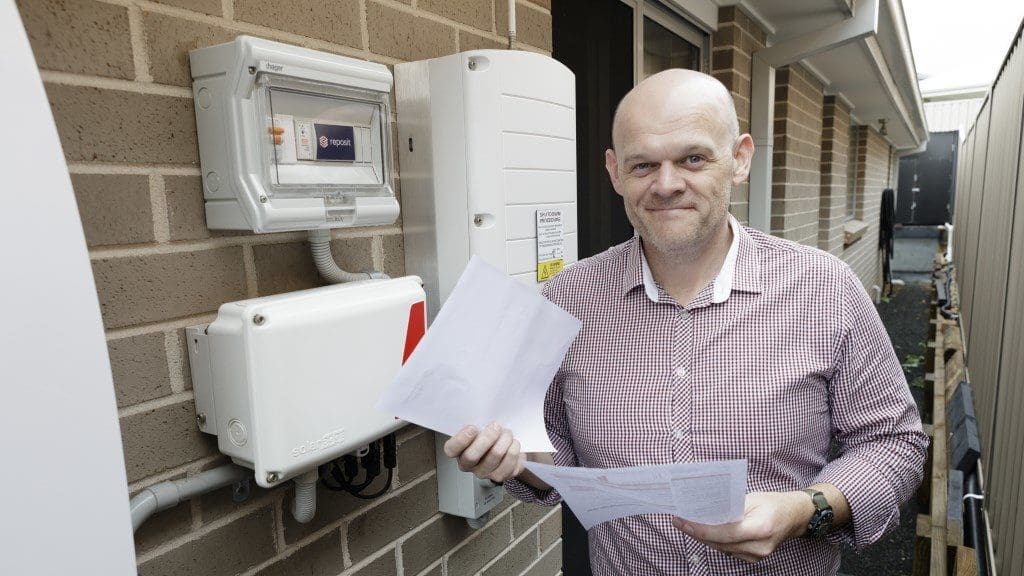 Nick says that his dedication to ‘prove the case’ for purchasing a first generation home battery device is one of the main motivators for the behaviour change in his home. His system is equipped with Reposit Power‘s Reposit Box, which allows him to monitor energy production & use in his home as well as export stored energy for a premium.
Nick says that his dedication to ‘prove the case’ for purchasing a first generation home battery device is one of the main motivators for the behaviour change in his home. His system is equipped with Reposit Power‘s Reposit Box, which allows him to monitor energy production & use in his home as well as export stored energy for a premium.
He has wrought this dedication upon his family members even though they don’t necessarily share his full passion for the endeavour, but the results have still been significant: he’s managed to bring down his average daily consumption about 25% to roughly 15kWh per day, and managed to ‘fit’ most of this consumption into his solar/battery system’s availability window.
He attributes the reduction in his energy bills (which are in the order of tens of dollar per quarter now) accordingly:
- 50% reduction thanks to solar PV
- 25% reduction thanks to the battery
- ~10-15% reduction thanks to switching electricity retailer
- ~10-15% reduction in usage via knowledge/insights
My Efficient Electric Home group
There were lots of responses to my enquiry in this group from people who could be described as ‘engaged’ energy users of various degrees.
Kheng, SA – 2.5kW solar system
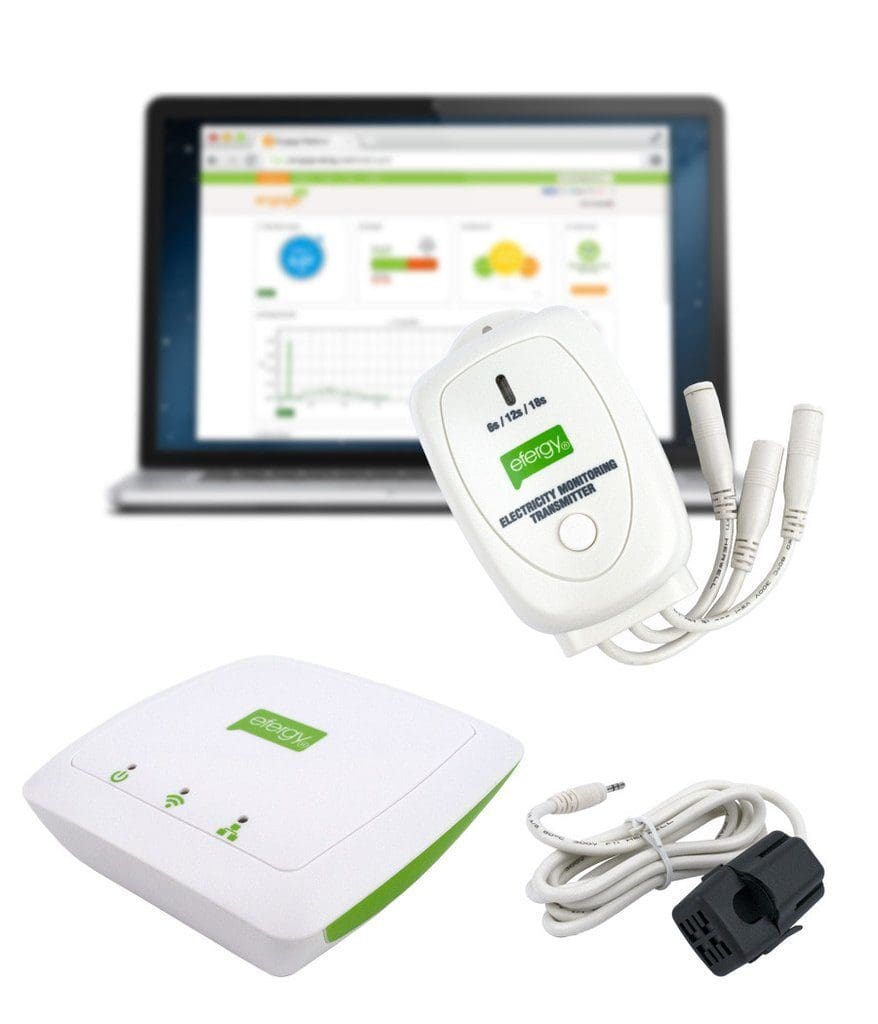 When I moved into my current home in mid-2015, the house had an existing 2.5kW solar system installed on the old SA Feed-in Tariff of 22 cents. I didn’t have any documentation and didn’t know how it was performing.
When I moved into my current home in mid-2015, the house had an existing 2.5kW solar system installed on the old SA Feed-in Tariff of 22 cents. I didn’t have any documentation and didn’t know how it was performing.
After doing some research, I read up about Efergy which although wasn’t highly accurate was easy enough to install and use. I had 2 Efergy monitors, one for the solar (to see my production) and the other with 3CT to see my overall consumption (3-phase power).
Over time I added the Efergy Engage Hub which allowed me to monitor on the go. Using Efergy allowed me to move my loads to daytime (i.e. Washing machine, Dish washer etc).
Fast forward to today, I’m using Solar Analytics to monitor my production (existing inverter – soon to be replaced – and new inverter) and consumption.
I will be looking at further energy management to tie in with home automation etc.
As it is today, in conjunction with smart metering, I’m diverting PV to electric hot water system.
Steve, VIC
I use an add-on system from openenergymonitor.org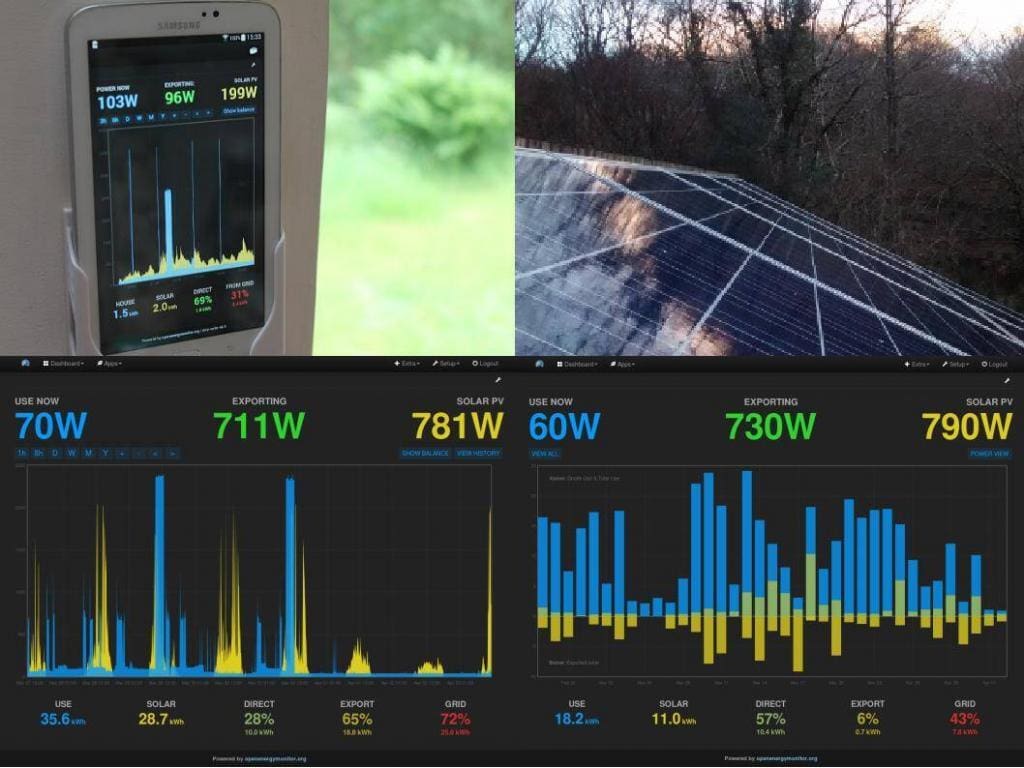 that has clamp meters on my power supply and inverter leads which I can then determine the usage and feed in/out. At the time it was only available as a kit form, so not very user friendly unless you could solder and sort out opensource software, but the site now looks to have more ‘off the shelf’ products. Currently monitoring and using the information to run appliances manually, but hope to get further integration from smarter devices in the future.
that has clamp meters on my power supply and inverter leads which I can then determine the usage and feed in/out. At the time it was only available as a kit form, so not very user friendly unless you could solder and sort out opensource software, but the site now looks to have more ‘off the shelf’ products. Currently monitoring and using the information to run appliances manually, but hope to get further integration from smarter devices in the future.
We are able to see the best times to put on appliances like the dishwasher and washing machine, we also use it to monitor when the washing machine has finished its heating cycle before putting the dishwasher on to make the most of generated power, rather than having them both run at the same time and pay for power when it will be cheaper to use our own later.
Alison, NSW – 3kW solar system
I have data since 2011 3kW PV install on pvoutput.org, fed real-time solar generation and direct metered usage.
A home automation system (KNX from Schneider Electric) and energy management system (custom code and openhab) work together to switch loads such as hot water, electric vehicle (EV) and small battery charging like laptops and power tools when we start exporting.
It also net-balances to match solar output as closely as possible. This is being continually refined, like working with EVSE supplier to alter car charge rate depending on solar output.
Jonathan, NSW – ~7kW solar system (Founder of SunnyShire.org.au)
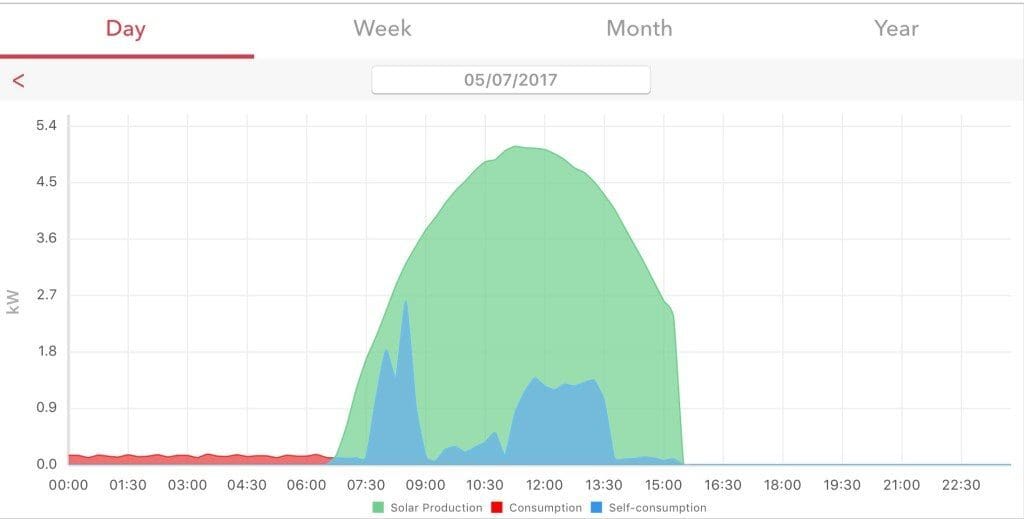 Some screenshots on my Solar Edge app with monitoring here and here.
Some screenshots on my Solar Edge app with monitoring here and here.
I think it brought forward our downlight replacement with LEDs. As the consumption monitoring is real time, I turned on all 72 downlights (prior to LEDs) and found it consuming 2.7kW. Has also motivated us to get the heat pump going day time. This stuff may have happened anyway, but the app gave us additional visibility to make it happen sooner I’m sure.
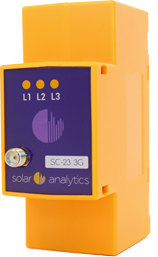
Nigel Morris – Business development director at Solar Analytics
Solar Analytics is Australia’s most popular solar system monitoring platform, with about 14,000 units installed nationally. Although they don’t have data ready without a bit of digging and some serious analytical research (which they’re working on), Nigel can confirm anecdotally that monitoring leads their customers to the lightbulb moments that result in behaviour change.
He points to one instance of a commercial client who had had a solar system installed for months without seeing much of a dent in their electricity bills. Thinking they had been sold a dud, they came to Solar Analytics for monitoring. Soon after the app was switched on, the client saw a spike in energy demand and was able to deduce that the solar system recently installed had not been sized appropriately – it was too small to help them fight demand charges.
The Solar Analytics blog has a collection of case studies covering topics from fault diagnosis, energy consumption in the home (namely: a slow cooker) and insidious shade cast by slowly growing trees. All of these point to awareness as a solution to energy bill pain points.
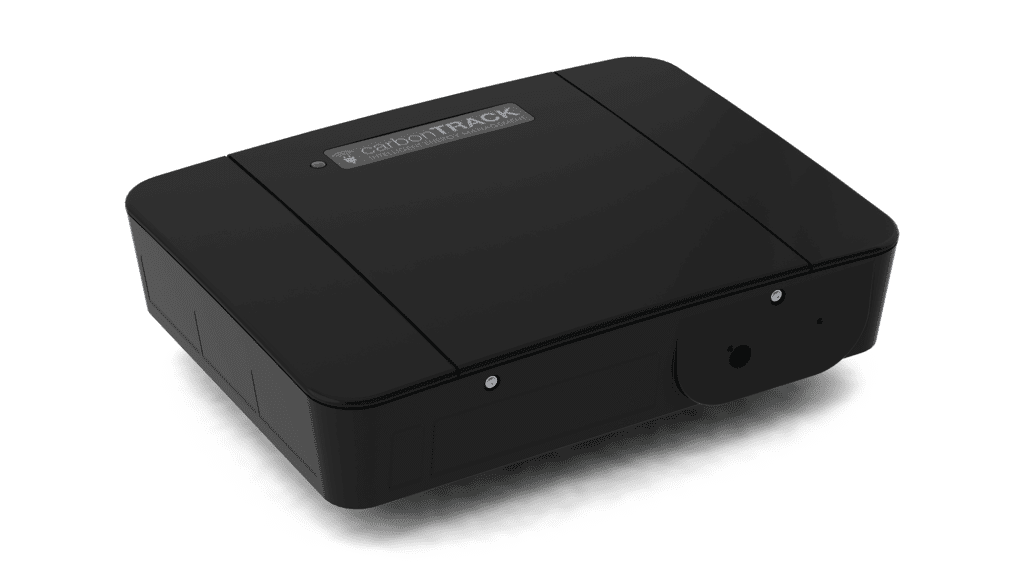
Shavaj Kallamkote – Chief technology officer at carbonTRACK
carbonTRACK is an Australian developer of home energy management & automation systems. Their co-founder Shavaj said in an interview that currently their devices allow households to take action on their energy consumption through both monitoring and control (remote & timer-based) of devices operation. Although they would likewise need to do a deep dive into the data to prove that awareness & control help households save money, he is currently using his own home as a pilot with the aim of developing automation algorithms that achieve savings without manual intervention.
The carbonTRACK website has a number of case studies from homes & businesses – some of which have solar, but some of which do not. In at least one instance, a customer of theirs was able to reduce his energy consumption by nearly 30% simply by realising that his electric water heater was running constantly – and taking action to change its running schedule.
What are the pitfalls?
It makes intuitive sense that people with insights into their electricity ecosystem will take steps to minimise costs – especially if they have solar and possibly a battery bank to deploy. But do they?
An article about how well ‘smart home’ gadgets actually help households to reduce their energy bills was recently published in The Conversation – and the results are enlightening.
Six of the 46 households involved in our trial said they were interested in doing more with smart home control. However, they were mainly interested in lifestyle improvements rather than saving energy. This is consistent with the way these products are being marketed to households by technology companies.
Our findings are also consistent with another recent trial of smart home technologies in the UK. That study found that participants made either limited or no use of similar devices to manage their energy use. Like us, the research team raised concerns about the potential for smart control to generate new forms of energy demand.
These findings call for more caution in how smart home control is promoted by the energy sector. We need to be realistic about how these products are marketed, how the media influences the way the products are used, and how the other benefits of smart home control may affect home energy consumption.
The extent of technical and usability issues also needs to be acknowledged. There is a real risk that householders could spend considerable time and money on devices that don’t deliver energy savings. The devices are not equally accessible for everyone, and older users in particular might need help in using them effectively.
The article concludes: “The danger is in assuming that lower power bills can come neatly packaged in a box – the reality, as always, is more complicated.”
Compare Solar & Battery Quotes
© 2019 Solar Choice Pty Ltd
- Solar Hot Water System: Everything You Need to Know - 27 February, 2024
- Enphase Battery: An Independent Review by Solar Choice - 20 January, 2024
- Can I add more panels to my existing solar system? - 8 August, 2023
We had a new customer last month who had a Wattwatchers home energy monitoring device installed and within 24 hours had solved a 5-year puzzle of why their energy bill was so high. Near real-time data granularity revealed that an electrician had incorrectly wired the electric hot water system to be billed at full rates instead of off-peak rate. Another customer reduced monthly power bill from average $400+ to under $200 by better matching daytime loads to solar curve, using Solar Analytics app. Knowledge is power over power!